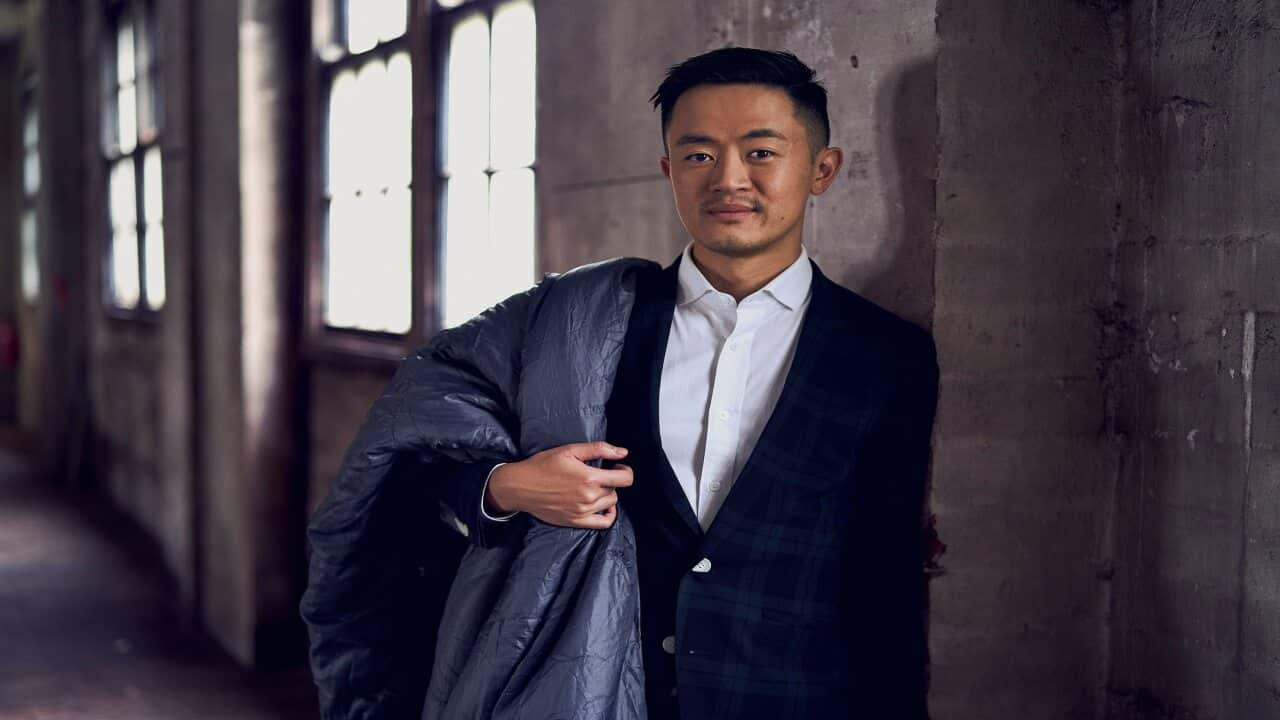Ten of thousands of Chinese gold miners flocked to Victorian goldfields, which they referred to as New Gold Mountain, in search of gold and wealth to create a better life for themselves.
The Chinese brought mining techniques and a distinct way of life from the East to an ancient island continent.
However, many would face discrimination and hostility from their European counterparts.
The gold rush era of the 1850s brought together three groups – the Europeans, Chinese and Indigenous Australians – where there were accounts of conflict.
The four-part SBS drama series New Gold Mountain focuses on this historically significant period in time.
‘One of the most expensive dramas Australia has made’
Series co-writer Benjamin Law told SBS Chinese the story of New Gold Mountain begins with the discovery of a white woman’s body outside a camp for Chinese miners.
Screenwriters wanted to demonstrate the tinderbox environment of racial relations between white gold-diggers, Chinese gold-diggers and the First Nations people in the gold-mining town, Ballarat, in Victoria’s west.
So, when you throw a murderer into the mix, it’s almost like pouring fuel on a fire that’s ready to ignite.

New Gold Mountain Source: SBS
This is how the series got its name.
“It’s probably one of the most expensive dramas that Australia has made. Really, because when you’re trying to recreate an entire world, there’s so much involved in that,” says Mr Law.
The Chinese faced discrimination throughout the gold mining era
Mr Law says many people within Australia’s television industry had long dreamt of bringing the gold rush to the small screen.
“But it’s such an incredibly ambitious thing to do,” says Mr Law due to the amount of research that needs to be conducted to be able to accurately depict history.
Research uncovered that European miners were often jealous and envious of the way Chinese miners worked, Mr Law says.
European miners were usually individualistic, while Chinese miners, worked in teams that yielded better results.
According to researcher Leigh McKinnon from the Golden Dragon Museum in Bendigo, Victoria, there were only around 140 Chinese people living in the state two years before the gold rush.
The following year, the Chinese migrant population grew to 5,000 before it reached 11,500 by 1855.
It is estimated that by the end of the 1850s, one-fifth of Victoria’s male population was Chinese, spread out across goldfield regions such as Bendigo, Ballarat and Castlemaine.
“The largest non-European group by far was the Chinese. And that seemed to create hostility in terms of a group thought of as being competition to the European miners,” says Mr McKinnon. The Chinese community faced unjust tax policies and racial riots against them throughout the gold rush era
The Chinese community faced unjust tax policies and racial riots against them throughout the gold rush era

Chinese miners in a Bendigo mine. Source: State Library of Victoria
Mr McKinnon says European miners didn’t believe the Chinese deserved to enjoy wealth and such a prominent place in the goldfields.
“Unfortunately, those threads of the story do continue through Australian history,” he says.
Mr Law says racial discrimination, xenophobia and anti-Chinese sentiment has persisted since it was first recorded after the Chinese arrived in Australia.
“If there was one thing that could ban different people together, it was usually anti-Chinese sentiment,” he says.
People could whip up xenophobia and really mobilise each other in terms of driving Chinese people out.
The screenwriter says this part of history hasn’t been talked about enough.
When history is taught in Australian high schools, the gold rush era is barely mentioned in textbooks, says Mr Law.
Hence screenwriters wanted to explore the era when ‘whites’, Chinese people and First Nations people coexisted.
In four episodes, this is “a very, very tight, telling of that story,” he says.
Telling of Chinese story from a Chinese perspective
Historians such as Mr McKinnon say stories have been told about the Australian gold rush that may not have been necessarily true because they originated from Europeans.
Mr Law says it was therefore important for New Gold Mountain to highlight a Chinese perspective and reflect the Chinese way of thinking. “I don’t want to generalise … but Chinese people think about their family, their culture, their country,” says Mr Law.
“I don’t want to generalise … but Chinese people think about their family, their culture, their country,” says Mr Law.

SBS show 'New Gold Mountain' brings the histories of Chinese-Australians to the screen. Source: Distributor.
“For instance, the two male brother characters [in the series], if they were orphans thrust into a different country, how would they interact? They wouldn't be calling each other by their first names” as they do in Western society, they would refer to one another as “brother”, says Mr Law.
He says there are still so few Chinese Australian stories that are told on screen, and therefore very few Chinese Australian actors end up being at the centre of a story.
In New Gold Mountain, one of the main characters is played by Yoson An, a Chinese-born actor.
“A lot of the [show’s] inspiration actually from history itself. So the historians that we consulted were incredibly useful there,” Mr Law says.
“It was important for this show, especially, to foreground and to centre a Chinese perspective.”
The series will be subtitled in Arabic, Traditional Chinese, Simplified Chinese, Vietnamese and Korean and will be added to the subtitled collection on SBS On Demand.
New Gold Mountain airs over two big weeks premiering Wednesday 13 October at 9.30pm and continuing on Thursday 14 October, Wednesday 20 October, and Thursday 21 October at 9.30pm on SBS and SBS On Demand.
New Gold Mountain is a Goalpost Television production for SBS. Major production investment from Screen Australia, in association with SBS. Financed with support from Film Victoria and Screen NSW. all3media International is the global partner on the show.
Join the conversation #NewGoldMountain







